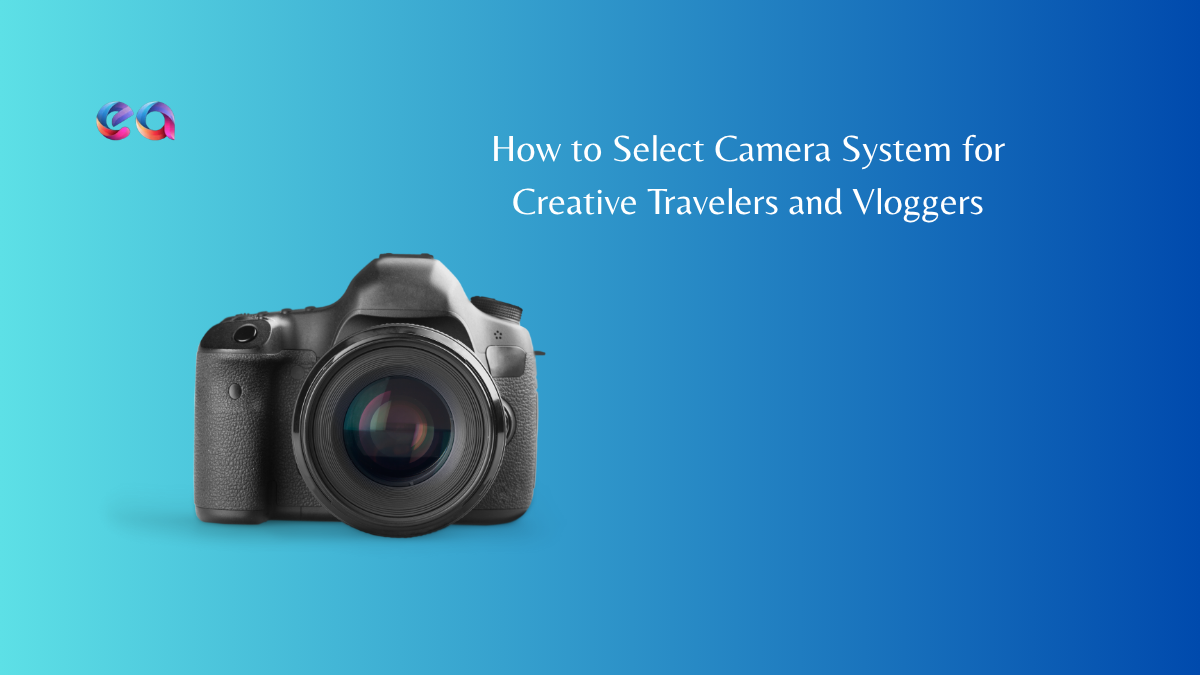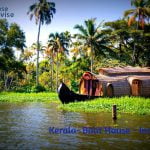
The modern creative traveler faces a complex decision when selecting photographic equipment: achieving high-end image quality while maintaining the extreme portability demanded by continuous movement across diverse environments. The selection process is a finely tuned balancing act governed by three primary factors—portability, performance, and durability—where any gain in one area necessitates a compromise in another.
This report examines the current landscape of travel cameras, focusing on the latest innovations in interchangeable lens systems and specialized compact devices. It provides a detailed analysis of crucial technical specifications, system costs, and long-term financial viability, helping creators determine the optimal gear investment for their specific travel style and content needs.
Table of Contents
Defining the Creative Traveler: Photography versus Vlogging DNA
The foundational choice for any travel camera buyer must begin with defining their primary output: are they a still photographer who occasionally shoots video, or a content creator whose main currency is stable, high-quality moving images? This distinction fundamentally dictates the required technical features.
The Foundation of Choice: The Triad of Portability, Performance, and Durability
Travel forces a careful assessment of bulk. While pocketable compact cameras offer unparalleled convenience, achieving professional image quality often requires the larger sensors found in mirrorless models. The traveler must choose a shooting tool that is compact enough for comfortable carry yet capable of capturing sharp stills and stable video.
For travelers venturing off-the-beaten-track, gear durability becomes non-negotiable. This necessitates considering cameras with rugged credentials. Options include specialized tools such as the OM System TG-7, which offers environmental sealing and waterproof capabilities , or dedicated action cameras, like the GoPro Hero series, which are built for quick, slick, adrenaline-fueled clips.
However, environmental sealing often requires a crucial, system-level compromise. Cameras with robust weather sealing (e.g., older, still capable Micro Four Thirds options like the Olympus E-M1 II or Panasonic GX8) are beneficial for shooting in adverse conditions like rain, snow, or dust. For this sealing to be effective, the body must be paired exclusively with a weather-sealed lens. This dependency restricts the choice of optics and frequently forces the traveler into using heavier, more specialized sealed glass, thereby imposing a hidden cost and increasing the overall bulk of the travel kit—a significant factor that erodes the portability advantage initially sought in a compact body.
Contrasting Priorities: Still Photography vs. Video Content Creation
The feature sets required for high-level photography and high-level vlogging diverge significantly:
- Photography Requirements: The serious travel photographer prioritizes attributes that maximize stills quality and compositional accuracy. This includes high sensor resolution, superior dynamic range for editing, and, critically, an Electronic Viewfinder (EVF). The EVF is essential for framing and manual control in bright sunlight, a scenario common during travel. Flexibility is also key, often requiring a long zoom range for shooting diverse subjects, from distant wildlife on safari to wide cityscapes.
- Vlogging Requirements: Content creators primarily require features that ensure effortless, high-quality video capture. The core necessities include reliable and fast continuous Autofocus (AF), superior audio input capabilities (via a 3.5mm microphone jack), mechanical or in-body stabilization (IBIS), and a fully articulating screen for self-monitoring while filming (vlogging).
A camera designed primarily for video, such as one lacking an EVF (like the Sony ZV-E10 II) , is functionally less versatile for the serious photographer traveling in sunny environments. Conversely, a purely stills-focused camera that lacks strong video AF or IBIS is a detriment to content velocity. The financial consequence of demanding a high level of performance in both disciplines—a true hybrid camera—is consistently reflected in a premium price tag, as the manufacturer must engineer the complex convergence of features like IBIS and high-resolution video capture into a single portable body.
Category Deep Dive 1: The Interchangeable Lens Powerhouses (APS-C Mirrorless)
The APS-C mirrorless segment is widely regarded as the optimal meeting point for portability and performance in travel. These cameras offer sensor size capable of significantly surpassing smaller sensors (1-inch compacts or smartphones) in low-light and dynamic range, yet their bodies and lenses remain much lighter than their full-frame counterparts. Mirrorless systems have already surpassed DSLRs in popularity across both new and used markets, cementing their role as the dominant platform for travel creators.
The current battle for content creation dominance centers on three major models, each presenting a distinct set of trade-offs.
The Creator Showdown: Technical Specifications Comparison
This table details the core specifications of the leading APS-C cameras favored by travel vloggers and hybrid creators:
Leading APS-C Travel Vlogging Cameras
| Feature | Sony ZV-E10 II | Fujifilm X-S20 | Canon EOS R50 |
| Sensor Resolution | 25.6 MP APS-C | 26 MP APS-C | 24 MP APS-C |
| Video Max Resolution | 4K/60p (Cropped) | 6.2K/30p; 4K/60p (Cropped) | 4K/30p (Oversampled) |
| In-Body Stabilization (IBIS) | No | Yes (5-Axis IBIS) | No |
| Viewfinder (EVF) | No | Yes (2360k dots) | Yes (2360k dots) |
| CIPA Battery Life (Approx.) | 610 shots | 750 shots | 230 shots |
| Body Weight (Approx.) | 377g | 491g | 375g |
| Release Date | July 2024 | May 2023 | Feb 2023 |
| Price Tier (Kit MSRP) | ~$1,200 | ~$1,600 | ~$850 |
Analysis of the Contenders:
1. Sony ZV-E10 II: The Autofocus and Video Specialist
The Sony ZV-E10 II is engineered unapologetically for video. Its primary strength lies in its exceptional autofocus system, leveraging Sony’s renowned Eye AF and real-time tracking capabilities. This level of dependable AF is invaluable for solo vloggers who need the camera to maintain sharp focus on their eyes while moving, even in challenging lighting conditions. Furthermore, the inclusion of 4K/60p video capture is critical, allowing for smooth, high-fidelity motion capture and the ability to slow footage down for cinematic effect. The body is remarkably light, weighing only 377g.
- Large APS-C type 24.2-megapixel Exmor CMOS sensor
- Interchangeable-lens camera, designed for easy selfie and vlog shoots
- 4K video with oversampling for greater detail
However, the ZV-E10 II has two primary limitations: the absence of an Electronic Viewfinder (EVF) and the lack of In-Body Image Stabilization (IBIS). The missing EVF severely compromises the shooting experience for photographers working outdoors in bright daylight. The lack of IBIS necessitates reliance on either digital stabilization (which introduces a crop and reduced quality) or stabilized lenses/external gimbals to achieve buttery-smooth motion. While the ZV-E10 II body is lighter than the Fujifilm X-S20, this initial weight saving is often rendered irrelevant once the creator adds the required external stabilization gear, such as a gimbal or a bulkier optically stabilized lens, to complete the professional video system. Therefore, the total, usable system weight often balances out, but the ZV-E10 II requires more components and complexity to achieve professional stability.
2. Fujifilm X-S20: The Hybrid and Battery King
The Fujifilm X-S20 offers the most complete hybrid package of the three, commanding the highest initial investment. Its primary advantage is the inclusion of 5-axis IBIS, making it the most stable option for handheld footage straight out of the box without requiring specialized lenses or external gimbals. This trades a slightly heavier body (491g) for profound system simplicity and efficiency.
- X-S20 offers the perfect blend of power and portability to turn thoughts and ideas into reality. Weighing just 491g (1.0…
- X-S20 combines powerful sensor and processor technologies to deliver a blistering performance for stills and video—allow…
- Thoughtful ergonomics and cutting-edge technology make camera shake and blurry imagery a distant memory with X-S20. The …
The X-S20 is also a superior tool for extended travel days due to its exceptional battery performance, rated at approximately 750 shots per charge. This longevity is significantly higher than its competitors, offering 25% more use than the ZV-E10 II and more than triple the endurance of the Canon R50. This battery reliability minimizes workflow interruption, eliminating the constant need to change or charge batteries throughout a demanding day. The camera also includes a high-quality EVF and offers competitive video specifications, including 4K/60p (albeit cropped). For the photographer, Fujifilm’s renowned film simulations and superior kit lens options (like the XF 18-55mm f/2.8-4, often bundled) further enhance its appeal.
3. Canon EOS R50: The Value and Simplicity Champion
The Canon EOS R50 is the clear entry point for beginners and those operating on a tight budget. It is compact, lightweight (375g, comparable to the ZV-E10 II) , and benefits from Canon’s industry-leading Dual Pixel AF technology. It is the most affordable camera in this comparison.
- Effortlessly create stunning content with the Canon EOS R50 Mirrorless Camera. Featuring 4K video capabilities, a 24.2 M…
- Image Sensor: CMOS AF II Sensor With 24.2 MP
- Image processor: DIGIC X
However, its appeal is curtailed by severe limitations. The R50’s video specifications cap out at 4K/30p , lacking the 4K/60p slow-motion capability offered by its rivals. Most critically for the serious traveler, its CIPA battery life is rated at a mere 230 shots. This is not merely an inconvenience; it represents a significant logistical hurdle. A full day of heavy shooting, especially combining stills and video, would require the traveler to carry and manage multiple spare batteries, disrupting the creative process and adding unexpected cost to the total system. The cost of accessories required to compensate for these deficiencies—such as extra batteries and a microphone—quickly diminishes the perceived initial budget saving.
Category Deep Dive 2: Ultra-Portable Specialists (Compact and Stabilized)
When maximum pocketability and immediate, stable video readiness are the paramount concerns, specialized compacts and action cameras offer solutions that interchangeable lens systems cannot match. These systems often leverage the one-inch sensor—the critical baseline for balancing superior light gathering with physical constraints.
Case Study: DJI Osmo Pocket 3 vs. Sony RX100 VII
These two cameras demonstrate divergent design philosophies within the compact segment, despite both utilizing a 1-inch class sensor.
- Sony RX100 VII: This camera prioritizes versatility, offering a substantial optical zoom lens and a high 20MP resolution for photography. It excels as a powerful, pocketable hybrid stills camera. For video, however, it relies heavily on digital stabilization, which, while effective, cannot match the quality of mechanical movement.
- DJI Osmo Pocket 3: Positioned as the “best camera for vlogging on the move” , the Pocket 3 is a highly specialized video tool built around an integrated, mechanical gimbal. This mechanical stabilization is the foundation of its performance, offering unmatched stability in a pocketable form factor, making it ideal for smooth walk-and-talk vlogging.
The technical difference is highlighted by a deep examination of their low-light video capture. Although both share the same sensor size, the Pocket 3’s effective resolution is lower (around 9MP for video), resulting in a significantly larger pixel pitch (3.2µ) compared to the RX100 VII (2.41µ). This larger pixel size inherently provides superior light gathering capability.
Furthermore, the mechanical gimbal is a massive structural advantage for videography. It allows the Pocket 3 to achieve stabilization even when using slower shutter speeds, such as 1/50th of a second. In contrast, the digitally stabilized RX100 VII requires a much faster shutter speed, generally 1/200th of a second or higher, to freeze motion and provide stable handheld footage. The combination of a larger pixel pitch and the ability to use slower shutter speeds ensures that the Pocket 3 delivers vastly superior low-light video performance compared to the RX100 VII, making it the better choice for content creators who frequently shoot spontaneously in challenging environments.
For the serious professional, this specialized performance suggests that the ultimate travel content kit may be a two-camera system: a primary APS-C hybrid (like the X-S20) for staged portraits and cinematic shots, complemented by the DJI Pocket 3 for quick, stable B-roll and spontaneous, high-quality walk-and-talk vlogging.
Action and Rugged Options
For adventures involving water sports, mountain biking, or harsh environments, specialized rugged cameras are indispensable. Action cameras (such as the GoPro series) or rugged compacts (OM System TG-7) leverage wide-angle views and sophisticated digital stabilization (often enhanced further by post-processing software like Gyroflow) to produce incredibly level, dynamic footage. Their inherent small sensor size, however, means they cannot compete with 1-inch or APS-C models in capturing detailed, low-noise video in indoor or low-light situations.
The Ecosystem: Lenses and Audio for the Road
A mirrorless body is only as portable and effective as the system of accessories that supports it. A common mistake is selecting a lightweight body only to pair it with bulky, heavy lenses, negating the entire purpose of traveling light.
The Single-Lens Travel Solution: Maximizing Range and Portability
For the minimalist traveler focused on efficiency, a high-quality “superzoom” lens often represents the single best investment, maximizing focal range while minimizing lens changes and total weight.
For the Sony APS-C system (used with the ZV-E10 II), the Sony 18-135mm f/3.5-5.6 OSS provides an exceptional focal range (equivalent to 105–525mm on a full-frame sensor). This span covers everything from wide-angle street photography to distant wildlife and compression shots, simplifying the shooting process considerably. Alternatively, those prioritizing maximum image quality and speed might opt for the Sony 16-55mm f/2.8 G, which maintains a fast, constant aperture across its zoom range, offering full-frame level quality in a more compact format.
For vlogging specifically, a wide-angle lens is an absolute necessity. Handheld vlogging requires a wide perspective to ensure the creator, especially at arm’s length, remains fully in the frame even when digital stabilization (which introduces a crop) is active. Lenses like the Sigma 10-18mm f/2.8 (available for both Sony E and Canon RF mounts) provide the fast aperture and necessary wide field of view to serve as the primary vlogging optic.
Audio Mastery: The Non-Negotiable Upgrade
While contemporary cameras offer spectacular image quality, internal microphones are universally insufficient for professional-sounding content. The inclusion of a 3.5mm microphone jack is therefore a mandatory feature for any serious travel vlogging system.
Audio quality holds the highest return on investment (ROI) in content creation. The viewer tolerance for imperfect video is high, but the tolerance for poor or noisy audio is extremely low, often leading to immediate viewer attrition. Investing in a quality external microphone (typically between $100 and $300) improves content professionalism immensely relative to its cost.
For travel, lightweight, hotshoe-mounted shotgun microphones are ideal. Highly recommended options include the Rode VideoMic Go II, praised for its simple setup and high performance at a reasonable price point, and the ultra-compact Rode VideoMicro II. Other reliable, compact choices include the Shure MoveMic 88+.
Stabilization Gear: Gimbals for Smoother Movement
Although IBIS-equipped cameras like the Fujifilm X-S20 significantly reduce reliance on external stabilization, dedicated gimbals are essential for achieving cinematic, floating motion and are required for non-stabilized bodies like the Sony ZV-E10 II.
The selection of a gimbal must account for compatibility. For APS-C mirrorless systems, the Zhiyun Weebill 3S is a confirmed high-performance option that offers full support for cameras like the Fujifilm X-S20. For smartphone creators, the DJI Osmo Mobile series, such as the 7P, provides a compact solution that transforms a smartphone into a smooth, professional video tool with features like automatic subject tracking and magnetic mounting. The critical factor here is recognizing that the initial body weight saving achieved by selecting an extremely light camera, such as the ZV-E10 II (377g), can be quickly inflated once a gimbal (often 700g or more), a high-quality lens, and a microphone are added, pushing the final carry weight well above 1.5 kg.
Financial Analysis: Price Flow and Value Investment
Understanding the initial cost (MSRP) and the long-term price flow (depreciation and residual value) is crucial for treating a camera purchase as a rational investment rather than simply an expenditure.
MSRP Comparison: Current Cost of Entry
The upfront investment for a functional travel kit varies significantly across the leading APS-C mirrorless systems:
MSRP and Value Proposition of Top Travel Kits (Body + Standard Zoom)
| Model | Standard Kit Lens | Approx. MSRP (Kit) | Initial Value Proposition | Key Trade-off |
| Canon EOS R50 | RF-S 18-45mm f/4.5-6.3 IS STM | ~$850 USD | Best budget entry point; lightweight body. | Crippling battery life (230 shots); no 4K/60p. |
| Sony ZV-E10 II | 16-50mm PZ | ~$1,200 USD | Best-in-class autofocus; 4K/60p video capabilities. | Requires external stabilization or stabilized lenses; no EVF. |
| Fujifilm X-S20 | XC 15-45mm f/3.5-5.6 | ~$1,600 USD | Integrated IBIS; outstanding battery life; EVF for photography. | Highest initial financial commitment. |
| DJI Osmo Pocket 3 | Included 20mm f/2.0 Gimbal Lens | ~$520 USD (Creator Combo) | Unmatched mechanical stabilization and portability. | Limited photographic versatility; lack of zoom. |
Understanding Real-World Value and Depreciation Trends
While the sticker price is the first consideration, the Total Cost of Ownership (TCO) reveals a more complex financial reality. The Canon R50’s attractive entry price is immediately offset by its need for mandatory accessories, specifically 2-3 spare batteries and a high-quality external microphone, pushing the true operational cost closer to the mid-range competitors.
Analyzing long-term value retention is equally important. The secondary market, driven by large platforms like MPB, shows that mirrorless camera adoption is growing rapidly, increasing the Average Purchase Values (APVs) for successful systems.
Fujifilm’s Value Resilience: Fujifilm stands out as having exceptional long-term value retention. Market data indicates that top Fujifilm cameras have experienced a 10% net price increase over three years in the US used market, in stark contrast to the significant depreciation seen in traditional DSLRs. This appreciation in the used market transforms the X-S20’s higher initial price tag into a more secure investment, offering a substantial hedge against depreciation if the creator decides to upgrade the body in the future.
Sony’s Market Stability: Sony remains a dominant force, consistently ranking highly in popularity (the Sony A7 III has been the most popular body since 2022) and continuing to surge in market presence during recent periods. This popularity ensures a stable and liquid secondary market, meaning that both Sony lenses and bodies are readily bought and sold, providing transactional security for long-term system builders.
Conversely, data suggests that legacy brands like Canon and Nikon are losing market share in the used segment to these challenger brands (Sony and Fujifilm). For the content creator, investing in a platform that maintains its value and popularity facilitates easier expansion and upgrading down the line.
Budget Recommendation Tiers
Based on performance, necessary accessories, and TCO, recommendations fall into distinct investment tiers:
- Tier 1: Ultra-Budget/Dedicated Video (Sub $1,000): This tier is best served by specialized simplicity. The DJI Osmo Pocket 3 Creator Combo offers the best dedicated, stable video quality in a pocketable format at this price point. For the absolute cheapest interchangeable lens option, the Canon R50 kit offers a start, but the creator must immediately factor in the high cost of mitigating its battery and audio limitations.
- Tier 2: Serious Enthusiast (Mid-Range $1,200–$2,000): The Sony ZV-E10 II system is the most powerful choice here. The funds saved on the body (compared to the X-S20) can be redirected toward superior, fast, autofocus-centric lenses (such as the Sigma 10-18mm f/2.8) and a high-quality gimbal, maximizing its excellent video features and AF capabilities.
- Tier 3: Professional Hybrid ($2,000+): This tier is defined by the Fujifilm X-S20 system. The premium is paid for crucial operational features (IBIS, 750-shot battery life, EVF) that enhance productivity and simplify the travel workflow, resulting in a system that is the most complete and efficient all-in-one hybrid option available.
Final Verdict: Matching the Camera to Your Travel Style
The search for the best camera system for travel vloggers is not about identifying a single, universally superior product, but about matching technological advantages to specific creative demands. The ultimate choice hinges on the traveler’s dominant shooting style, technical aptitude, and tolerance for complexity.
Recommendation Matrix: Content Focus vs. Technical Need
1. The Vlogging Purity Test: Maximum Stability and Portability
If the creator’s content is 80% or more spontaneous, stable footage—walk-and-talk segments, smooth B-roll, and quick clips—then the focus should be on mechanical stabilization and pocketability. The DJI Osmo Pocket 3 is the superior tool for this scenario, providing unmatched smoothness due to its integrated gimbal, which overcomes the low-light limitations of its 1-inch sensor.
2. The Hybrid Demands: Stills and Video Parity
For the traveler who requires near-equal performance in high-quality still photography (requiring an EVF, resolution, and film simulation) and stable video (requiring IBIS and battery life), the Fujifilm X-S20 is the definitive choice. Its integrated stabilization, superior endurance (750 shots) , and inclusion of an EVF justify the premium cost by delivering the most professional, self-contained hybrid package.
3. The Autofocus Dependency: Solo and Action-Oriented Video
For the solo creator whose primary concern is flawless, stress-free continuous autofocus performance in variable conditions, the Sony ZV-E10 II is highly reliable. This choice, however, requires the user to budget for and manage the added complexity and bulk of an external gimbal or stabilized lenses to compensate for the missing IBIS.
The shift in the market toward mirrorless systems and specialized video tools means that travelers no longer need to compromise entirely on quality to achieve portability. The key differentiator among the top contenders is increasingly found not in core specifications, but in the operational convenience they offer: the X-S20 offers high operational efficiency via IBIS and battery life; the ZV-E10 II offers maximum automation and AF reliability; and the R50 offers pure value entry, albeit with significant logistical drawbacks. The sophisticated traveler recognizes that the best camera is the one that minimizes technical friction while maximizing creative flow on the road.














